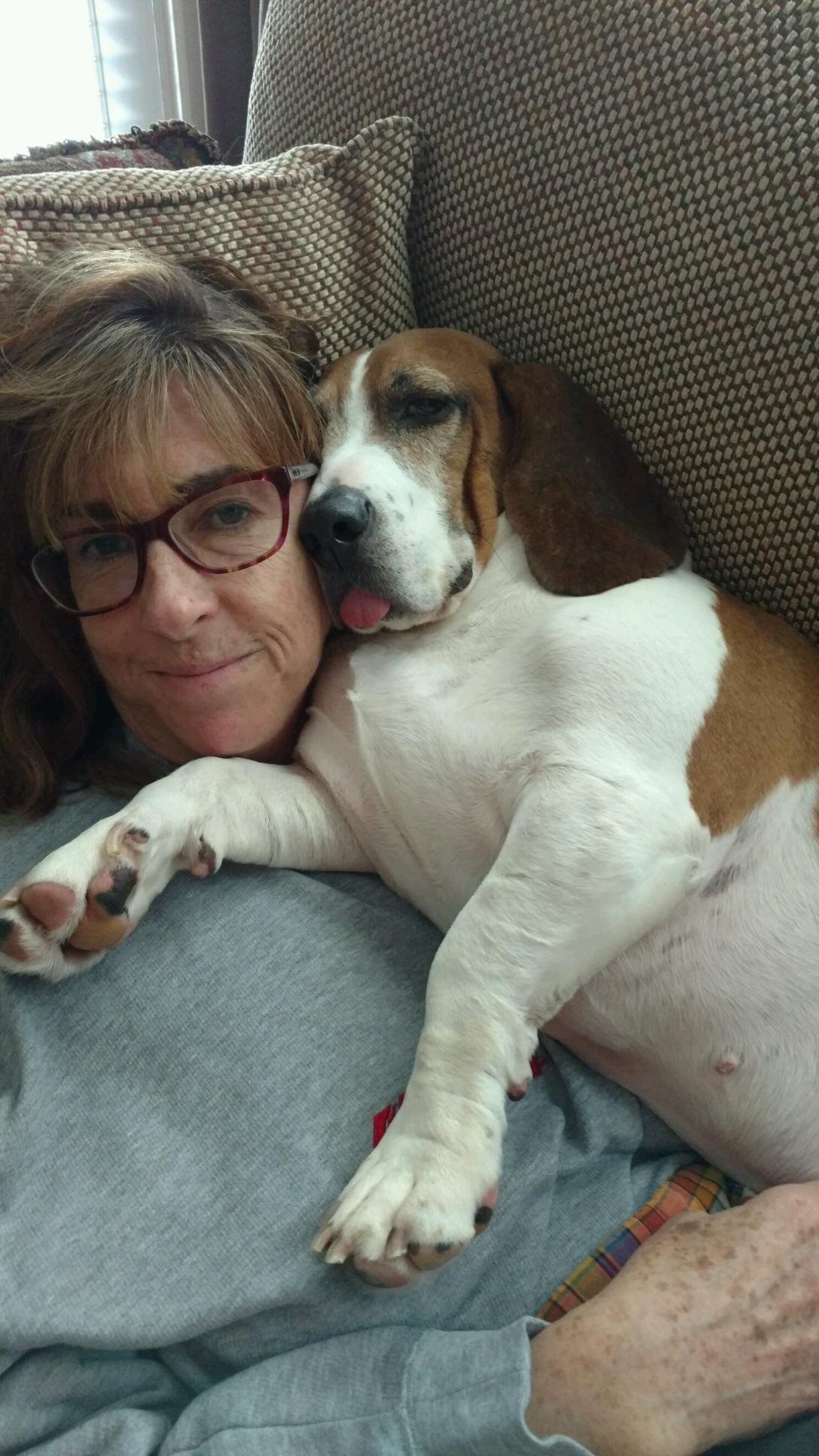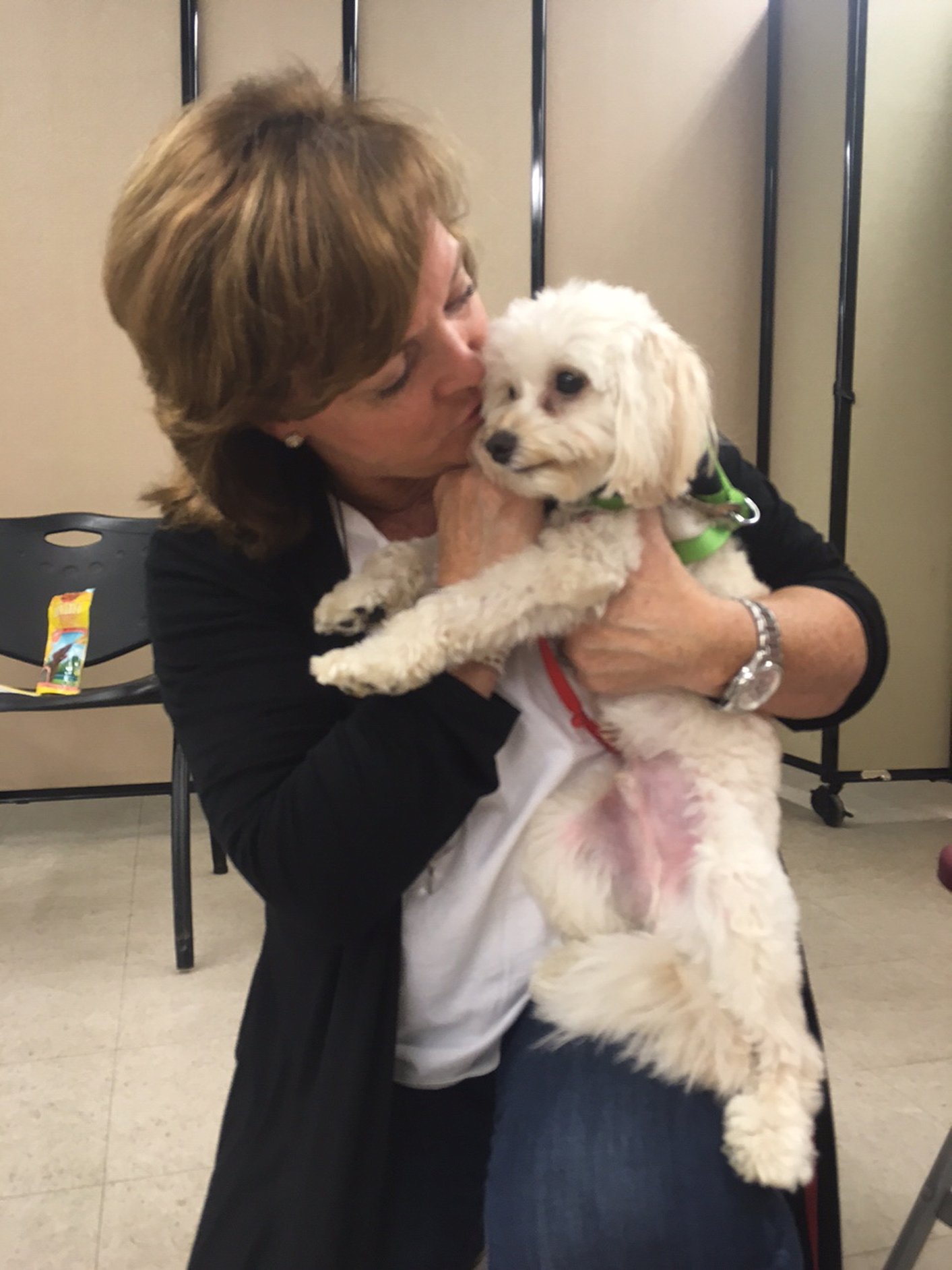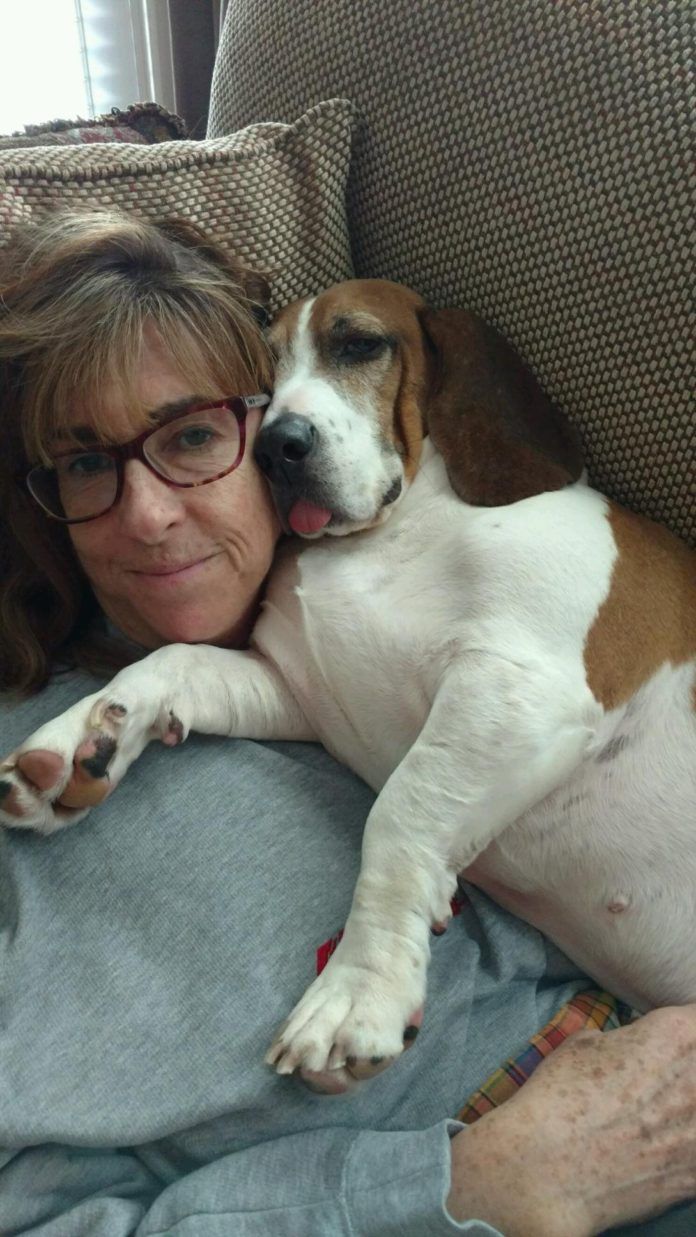Annette Cheney of Raleigh, North Carolina, is upset. So is Carol Costello of Hingham, Massachusetts. Both have dogs whose behavior was perfectly delightful — until the day that it wasn’t.
In the case of Ms. Cheney, her five-year-old basset hound, Otis, has begun balking about going outside. When she and her husband first adopted him about a year ago, she says, “he walked very well. He is energetic and healthy. But now, loud noises “agitate him to the point of refusing to go out at all,” she says. “Many times we can coax him out, but only briefly and just to ‘take care of business.'” She is worried not just about Otis relieving himself but also about his getting the proper exercise and, at least as important, “helping him relax and enjoy his walks again.”
Ms. Costello is upset because wonderful one-year-old Teddy, a well-socialized and happily charming Maltese-poodle mix, has started pooping in the house. Every morning the family has been waking up to one of his “deposits.” As a stop-gap measure, the Costellos have taken to locking him in his crate at night so he won’t destroy the dining room carpet.
The head of the Tufts Animal Behavior Clinic, Stephanie Borns-Weil, DVM, isn’t at all surprised by these changes. Otis and Teddy each has one of the four main reasons a dog’s behavior will appear to change out of nowhere. But, she remarks, contrary to appearances, “it may not be of the blue. It means the problem has finally reached a tipping point, and the dog now exhibits clinical signs that are apparent to the owner.”

4 Reasons a Dog’s Behavior Changes ‘Out of the Blue’
1. Noise phobia. Ms. Cheney is actually lucky that she was able to draw a line between Otis’s noise phobia and his unwillingness to go outside, Dr. Borns-Weil says. A lot of times, a dog will try not to budge from the house, and it’s not necessarily apparent that noise phobia is the cause of the problem. It can take some working backwards to figure out the cause.
With Otis, it’s clear, though. Says Ms. Cheney, “he is very skittish of loud noises, such as fireworks and backfiring cars,” and it is because of noises like those that he digs in his heels and works not to leave the house.
What has been unclear to Ms. Cheney is why the problem started to occur almost a year after her family brought Otis home to live with them.
Dr. Borns-Weil says the date of Ms. Cheney’s letter to us outlining her difficulties with Otis — July 9 — provides a strong clue. “July is the worst month of the year for dogs,” the veterinary behaviorist comments. “It’s thunderstorm season, but worse than that, it’s fireworks season. Not just on the fourth of July, but you’ve got people letting off firecrackers two weeks before and two weeks after. So we see dogs that not only become afraid of the noise, but also afraid of the neighborhood where they heard the noise. Some dogs even become afraid of July.” (We’ve heard of one dog who hated Thursdays because that’s the day of the week the noisy garbage truck came. He got scared on Thursdays even when the truck did not come.)
“You can have a dog who for many years doesn’t react outwardly,” Dr. Borns-Weil says, “yet he’s becoming more sensitized all the time. In year one, the dog may not like the fireworks and just deals. In year two the dog may feel, “Not again,” and become more frightened but not necessarily display his anxiety. Finally, in year three, he won’t step outside.” For that dog, the third time is the tipping point. Indeed, the average age for a dog to develop noticeable thunderstorm phobia is age 7. “It takes years to keep getting a little bit worse until it gets to the tipping point,” Dr. Borns-Weil notes.
Otis had a problematic history, which increased his chances of ending up with noise phobia. Ms. Cheney relates that “he was rescued from the side of the interstate.” At that point he was already about four, so who knows what he had been through before that?
Solution: “You cannot simply make a dog go outside and face his fears — that makes the problem way worse,” Dr. Borns-Weil says. Instead, “you have to desensitize gradually.”
Ms. Cheney may want to start, in fact, by using an avoidance strategy. Perhaps there are quieter times or places that she can walk Otis, “maybe early in the morning or after the school buses roll — around 9 a.m., and then maybe 7 at night,” after rush hour, the doctor says. And she might be able to find a quiet meadow or some other relatively still spot where trucks don’t go by and car doors don’t slam.
It’s important to “capture the times the dog does go out with warm praise and food treats,” the doctor says.” That will let Otis know that going outside comes with good things. Those things then come to the foreground, pushing the noise a little into the background.
It’s also important to find the least stressful way to take the dog from the house. Dr. Borns-Weil had one patient with noise phobia who hated to go out the front. “She was much better going out the back door,” she says. “Once she was out, she would immediately go to the bushes closest to the back door and do her business. She’d get a food reward right then and there and then go back in. From there, her owner was able to start branching out.” Part of it is letting your dog know that you’re there to protect him, not coerce him.
“There can’t be any forcing,” Dr. Borns-Weil says. “To counter-condition a dog away from noise phobia, you have to stay within his comfort zone. A dog may be willing over time to take steps away from the safe zone. The more you can make positive associations away from the safe zone — treats, petting, praise — the more the dog will be willing to go further still.”
In practical terms what it means is that if the dog walks for 10 yards and then stops in his tracks, “then go nine yards and head back before the dog gets upset,” Dr. Borns-Weil advises. When he’s willing to go the extra step, heap extra praise and rewards.
Admittedly, says the doctor, “sometimes you can’t even get to square one. The dog won’t even approach the door. That to me is an argument for anti-anxiety medication. It can raise the threshold for what the dog is able to tolerate, so you can start the gradual desensitizing and counter-conditioning.”
One-fast acting drug that might work is Sileo (dexmedetomidine oromucosal gel), which is specifically indicated for canine noise aversion. But it’s best if the dog has one specific trigger, like fireworks or thunder, Dr. Borns-Weils says. You administer it a half hour to an hour before you walk out in the triggering situation. If the noise phobia is generalized, she might use an SSRI like fluoxetine (Prozac). On a daily basis, rather than a situation-by-situation basis, that will provide some relief and thereby increase confidence about dealing with the noise.
Otis may not need medication. Ms. Cheney might be able to get him more comfortable outside by taking him to out-of-the-way spots at quiet times of day. He may never become completely comfortable with loud noises — fireworks, thunder, rumbling trucks, car doors slamming — but he can reach a point where he does not have such a maladaptive response that he can’t relieve himself or get outdoor exercise without terror.

2. Anxiety. For the life of her, Ms. Costello could not figure out why tiny Teddy started leaving a “Tootsie Roll” for her each morning. He had been potty trained early in puppyhood, and now he was approaching a year and a half. But when we asked her whether there had been any changes in the household lately — a death, a remodel with workmen coming in and out perhaps, or changes in Teddy’s routine — the pieces started coming together.
The family started noticing the stools on the dining room rug around the beginning of August. At the end of July, they had left him at someone else’s house when they went to Cape Cod for a week’s vacation. Teddy had never been away from home before. The Costellos had gone away on vacation for a week several months earlier, but that time, someone came and dog-sat Teddy right in his own home. This was different.
To make matters worse, the vacation on the Cape was cut short by a death in the family. Ms. Costello’s aunt, to whom she was close, died suddenly of a heart attack. While the entire family loves Teddy — including Mr. Costello and the couple’s three children — Ms. Costello is definitely his “go-to,” the person in the household with whom he has the closest bond. So to have her put him in someone else’s home, then see her come home from vacation grieving and distracted, was too much for him. First she wasn’t there for him physically, and then she wasn’t there for him emotionally, and he started acting out. It was a clear case of anxiety.
Teddy may have had some subclinical anxiety for a long time. “Many times a family doesn’t recognize the problem because the dog is a silent sufferer. Then it gets kicked up a notch by a life change, and the dog acts out in way that his owners may notice,” Dr. Borns-Weil says.
Solution: Free Teddy! By locking him in his crate at night to make sure he doesn’t soil the rug, his owners are most likely increasing his distress and anxiety that stems from the changes caused by their going away and by the death in the family. That is, they are taking a bad situation and making it worse, which will only make Teddy more likely to eliminate in inappropriate places inside the house when he is let out of his crate.
But how to make sure Teddy does not poop on the rug? In this case, it’s actually pretty easy.
Teddy just needs a return to normalcy, and perhaps may even need a little extra TLC. He wants everyone to be calm and happy and not to have to stay at someone else’s home when the Costellos go away. Our suggestion to Ms. Costello is that since she is Teddy’s go-to family member, she indulge him in more “we” time with “Mom” — nice petting sessions on the couch in the evening, plenty of positive attention when she comes home from work, and a recognition that the dog can pick up on her moods and feels frightened if he senses that she is not emotionally available to him. Once his emotional balance is restored, we expect that his doing his business indoors will cease.
3. Aggressive Temperament or Fear. It frequently happens that a dog who has been completely non-aggressive when adopted at 12 to 16 weeks will, somewhere between nine months and two years of age, “suddenly become aggressive to his owners or to other people,” Dr. Borns-Weil says. The bulls-eye, age-wise, is one to one and a half years, with some crossover into the margins.
There are two possible reasons for this, the doctor says. One is that somewhere between the age of one and two is when a dog reaches social maturity. And “as an adult dog, he may be more ready to come forward. His natural temperamental boldness manifests as aggression.”
Another possible reason for the aggression is that the dog had a negative experience as a very young pup that the owner missed. It could have happened before the dog came to live with the person, or even after. If the experience induced fear, it could manifest itself later on as aggression as a method of self-protection. The aggression doesn’t show right away because, again, a puppy will not show that side of himself, generally speaking. It will come out a little later.
Solution: If the aggression is owner-directed, the owner needs to step up the dog parenting. Consistent rules are important. The dog must learn that valuable resources — food, attention, playtime — are provided in accordance with predictable rules that enable the dog to understand his owner’s expectations. That might mean making the dog sit before he is fed, not giving into pushy behavior, and so on. It doesn’t mean treating the dog nastily or attempting to dominate the dog. It just means insisting on house rules and on treating the “parents” with appropriate deference.
Dogs who act aggressively toward their owners are actually anxious and confused; they are unclear about who is supposed to be taking care of things in the household. If you take the lead, the dog will feel more secure.
Dogs who act aggressively toward people other than family members are not confused. They are scared. They have what is known as fear-aggression and are trying to keep away supposedly scary people (and other dogs) by barking and engaging in other threatening tactics. Those dogs need to be kept away from what frightens them and desensitized in a step-wise manner, just like dogs with noise phobia or separation anxiety.
4. Undiagnosed Medical Problem. The behavior that this tends to cause seemingly out of the blue is an inability to sleep. “It tends to be a sudden onset,” Dr. Borns-Weil says, and it usually happens with older dogs. “Most of these dogs have a previous history of separation anxiety, so they’re a little vulnerable” to acting out at nighttime, when everyone in the household is asleep and they’re effectively alone.
Usually the sleeplessness is due to a medical problem that has reached a tipping point. “When an older dog is uncomfortable or in pain from a medical issue or even loses some function — can’t see or hear as well as he used to — he can become much more timid at night,” Dr. Borns-Weil says. “During the day there are the regular daytime activities that distract him; he has that constant reassurance. But when his owner is sleeping, the dog can’t feel reassured. He has nothing to think about but what’s ailing him. It could even be cognitive decline that’s keeping him up.”
Solution: If an older dog suddenly can’t sleep, take him to the veterinarian for a physical workup. Chances are something is wrong that is interfering with his comfort and not letting him settle down. Once the medical issue is tended to, the dog should be able to relax at night.






My 9-year-old rescue dog has suddenly become almost antisocial. Whereas she used to be very social and always wanted to be by our side (my husband or me), she now avoids us. She has always escaped to another run in the house if we argued but now she just wants to stay outside and does not want to come inside. We have not been arguing now for two weeks but she still is not acting normal. If we go out, she comes in, if we come in she goes out. It is like she hates us now. Yet sometimes she will actually love and kiss on us or play with us but not for long. My vet gave her trazodone and it seems it may help a bit. What else can we do?
My dog has been doing something somewhat close to that?
We usually greet Charlie with a ” Do you wanna go for a walk?” and he gets EXTREMELY excited. He still has been overly excited when we leash him up, but for some reason we can only get a few houses down. He hasnt been greeting other dogs or anyone like he used to, he immediatly turns around and tries to speed home. We take him on his daily routine walk, which takes about 30 minutes, but hes been going out less and less. We took him off his separation anxiety medicine, and after that he was fine. This started a couple days ago and now hes just so unenthusiastic about it. I checked the heat of the sidewalk most days too, since its fall its way under 70 degrees, so his paws are fine. Hes 4 an dhas never acted like this, even when we take him outside in the backyard for a quick restroom break, hes just scared. Charlies an inside dog but i dont understand why hes so frightened. Any solutions?
We’ve had our Teddy for 8 years (rescue Silky Terrier) and he has been a wonderful,
Loving smart easy! Until yesterday! After returning from errands he was happy. Noticed that when I fed him he would walk up to his bowl then back up do it again snd sgain. Slept between us but after rousing he acts like he’s never seen us. Terrified! Help!
My neighbor dog begged to come over several times a day. As of recent she gets to my door and turns to leave. Once inside, she takes the treat from me, then sits on the furthest corner of the rug away from me. I live alone. No clue what’s bothering her? I miss her company 😪
Awww this is heart wrenching I hope the dog is ok maybe something spiritual you never know right?
One thing I have actually noticed is there are plenty of common myths regarding the banking institutions intentions while talking about foreclosed. One myth in particular is the bank would like your house. The lender wants your cash, not your own home. They want the cash they loaned you having interest. Steering clear of the bank is only going to draw the foreclosed realization. Thanks for your post.